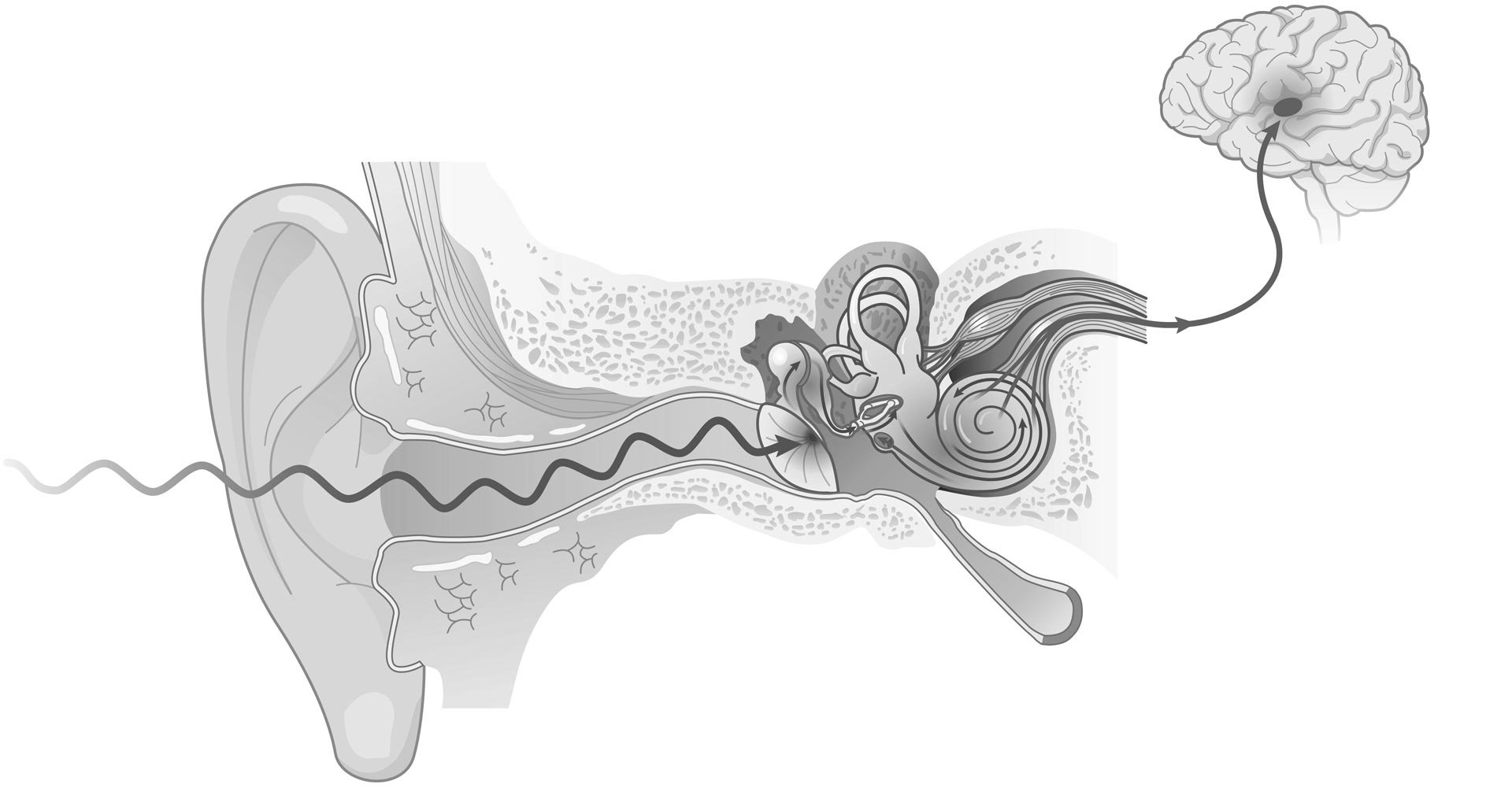
Hearing Loss
Now located in Montrose and Delta, Colorado
Hearing Loss
Hearing loss can feel isolating and frustrating. Worse, it can happen so slowly you don’t realize it right away, which is dangerous considering even very mild hearing loss can affect your brain and cognitive function.
Hearing loss affects an estimated 48 million Americans. There are many different causes, which translate to different types of hearing loss. An understanding of the cause and type of hearing loss is essential in developing a successful treatment plan.
Hearing aids are the most common treatment for hearing loss.

Types of Hearing Loss
There are three main types of hearing loss. They are:
Conductive Hearing Loss. Conductive hearing loss occurs when there are problems with the ear canal, eardrum or middle ear. There are a variety of causes including structural deformities, fluid in the middle ear, ear infections, allergies, impacted earwax, perforated eardrum, foreign objects in the ear and benign tumors. Conductive hearing loss may be correctable with surgery or medication.
Sensorineural Hearing Loss. Sensorineural hearing loss involves problems with the inner ear and is sometimes referred to as “nerve deafness.” Causes include noise exposure, trauma, viruses, autoimmune disorders, Meniere’s disease, malformations of the inner ear and tumors. Treatment for sensorineural hearing loss usually requires hearing aids.
Mixed Hearing Loss. This is a combination of conductive and sensorineural hearing loss and affects both the inner ear and middle or outer ear. Treatment options depend on the exact cause and may include a combination of medications, surgery and hearing aids.
Unilateral vs. Bilateral Hearing Loss
In addition to the different types of hearing loss, it is important to consider the extent to which a patient is experiencing symptoms. Hearing loss is further categorized as being either monaural or binaural. Unilateral hearing loss (sometimes referred to as single-sided deafness) affects one ear only, while bilateral hearing loss affects both ears.
Patients with unilateral hearing loss have normal hearing in one ear and impaired hearing in the other. They have difficulty hearing on one side and localizing sound.
Individuals with bilateral hearing loss have impaired hearing in both ears. The condition is most often treated with hearing aids (two are more effective than one) or cochlear implants.
Structure of the Ear
The ear is a surprisingly complex organ responsible for collecting and processing sounds and transmitting them to the brain for interpretation. Many take hearing for granted, but understanding the process is the key to treating hearing loss. The ear consists of three sections: the outer ear, middle ear and inner ear. Each plays an important role in hearing.
The outer ear is called the auricle or pinna. It is the external portion visible to others and is responsible for collecting sound waves and funneling them into the ear canal. There, they are amplified and sent to the tympanic membrane (eardrum), causing it to vibrate.
The middle ear consists of the auditory canal and tympanic membrane. When the eardrum vibrates, it stimulates movement of the ossicles, a trio of tiny bones comprised of the malleus (hammer), incus (anvil) and stapes (stirrup). The stapes attaches to the oval window, which connects the middle and inner ears.
The inner ear contains the cochlea, a fluid-filled structure where vibrations transmitted from the eardrum cause hair cells to move. This movement is converted to electrical impulses that traverse the auditory nerve to the brain. There, they are interpreted as sound and the hearing process is complete.

Tinnitus
Tinnitus refers to a ringing or buzzing noise in the ears. Tinnitus is not a disease, but rather a symptom of a separate underlying condition. While people commonly experience occasional ringing in the ears, prolonged tinnitus may indicate some form of hearing loss. Tinnitus can be irritating, but it doesn't usually indicate a serious medical condition.
There are many possible causes for the unwanted stimulus of tinnitus: prolonged exposure to loud noise, hearing loss, medications, diet, and even stress.
One of the most popular treatments for tinnitus is to use hearing aids to help mask the sound of tinnitus. Generally, white or pink noise is used to provide pleasant background noise.
Using hearing aids can help mask the sound of your tinnitus because when you have tinnitus, it is best if you are not in complete silence. When there is nothing else to distract you from your tinnitus, the phantom sound can become louder and more annoying.
Also, what surprises some people is the connection between hearing loss and tinnitus. While you do not need hearing loss to use hearing aids for your tinnitus, quite a few people who have tinnitus also have a degree of hearing loss. By using hearing aids, you can use them both as sound maskers and help amplify the sounds you want to hear.
What People Are Saying
“I highly recommend Tim & Clarity Hearing Aid Center. He made me feel comfortable during the exam & selection process. He never pressured me to get hearing aids or select a particular model. He spent a lot of time going over how to care for them so I could make the most use of them. If you want to hear the world around you again, Tim can help you do that.”
— Fred
“I am very pleased with my Clarity Hearing Aids. Tim Holcomb is very knowledgeable and extremely helpful - also most patient in helping me become accustomed to the use of these hearing aids. He is always available to answer any questions, check and update my hearing aids as needed. Thank you Tim for all your help.”
— Lynette
Insurance
Keeping hearing aids affordable
If you have a hearing aid benefit within your current insurance plan, there is a good chance we take it. We now work with Humana, United Health, Blue Cross Blue Shield, TruHearing and many others.
If you don’t see your insurance listed here, call us or call your insurance provider to check coverage.











